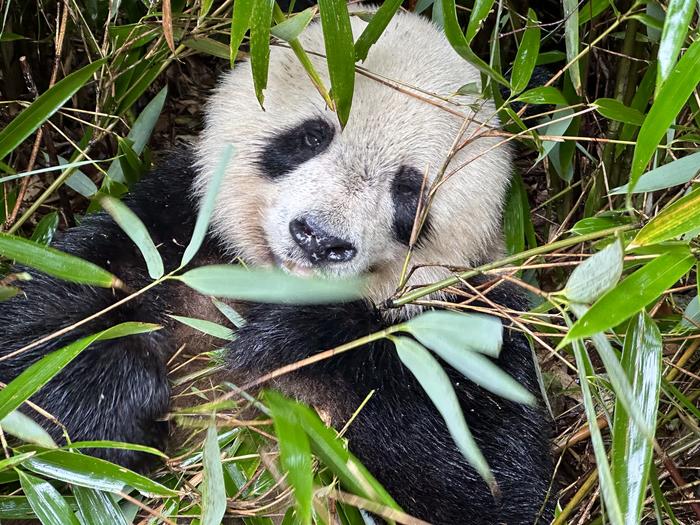In a study published in Current Biology on Aug. 9, a research team led by Prof. WEI Fuwen from Jiangxi Agricultural University and the Institute of Zoology of the Chinese Academy of Sciences has revealed the importance of habitat connectivity in recovery of the giant panda (Ailuropoda melanoleuca).

Credit: Photo by HUANG Kai
In a study published in Current Biology on Aug. 9, a research team led by Prof. WEI Fuwen from Jiangxi Agricultural University and the Institute of Zoology of the Chinese Academy of Sciences has revealed the importance of habitat connectivity in recovery of the giant panda (Ailuropoda melanoleuca).
Specifically, the study showed that conservation efforts have helped improve landscape connectivity and subsequently gene flow.
“If these processes can be sustained and improved, the panda’s path to recovery will be less encumbered by loss of genetic diversity, fostering hope that the present rate of recovery will not be stalled,” said Prof. WEI, corresponding author of the study.
In 2016, the giant panda reached a milestone rarely achieved in species conservation, i.e., downlisting by the IUCN from Endangered to Vulnerable. However, studies of ecological and population genetics mechanisms underlying population trends and conservation strategies have been lacking—making it difficult to develop next-phase conservation strategies for panda recovery.
To address this lack of information, Prof. WEI Fuwen’s team used data from China’s 3rd and 4th Giant Panda National Surveys along with DNA sampling data to better understand issues related to giant panda conservation. Their work revealed that China’s effort to mitigate anthropogenic disturbances by improving habitat quality and reducing habitat fragmentation was associated with increased panda population density.
Furthermore, the research showed that enhanced landscape connectivity overall reduced inbreeding via improved gene flow even though inbreeding increased temporarily due to high local panda density.
Findings from this study will help guide future giant panda conservation management. Specifically, it will show how a detailed examination of genetic processes can contribute to more effective strategies for recovering endangered species.
Journal
Current Biology
Article Title
Habitat connectivity drives panda recovery
Article Publication Date
9-Aug-2024



